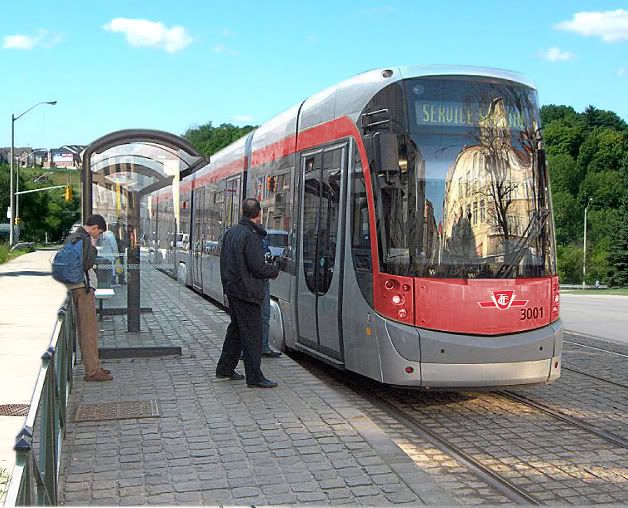When the fleet is new perhaps - but what when it is 30-years old?
And surely the TTC is going to reduce frequencies - we only have to look at Queen street, which has lower frequencies than other routes, to see that.
Well that's pretty much the point. Right now the CLRV fleet
is 30 years old! And the ALRVs are 25 years old. People wonder why they're falling apart?
The reason Queen has lower frequencies right now is because of age-old managerial screw ups where instead of investing in larger fleet to accomodate demand that the regular streetcars were struggling to support (as is the case with King St. service), the TTC tried to supply the same
capacity with fewer vehicles to cut down on labour. Steve Munro urged the TTC to shift the ALRVs to King and run Queen with CLRVs at higher frequencies since Queen can make-do with that (King can't), but TTC having already dug themselves into a hole they can't get out of, which they got into by ignoring previous advice, ignored more advice, and King continues to get worse with only a very limited number of ALRVs mixed among the CLRVs in the AM only.
With all the streetcars of the same model, the calculations for frequencies will be consistent for all routes. Right now Queen uses its own formula unique in the system because it's the only ALRV route.
Frequencies might drop by 15 seconds, but I wouldn't say that's anything worth worrying about. Frequencies certainly won't be dropping on King, and on Queen they can't drop since they're already planning to blend in buses to make up for the failing streetcar fleet. It's gotten to the point where there's such a shortage of usable vehicles (i.e. too many are in the bleedin' shops for repairs), that buses are being brought in to help cope with the shortage.
Until now, the TTC has tried to get away with scheduling fewer vehicles and hoping nobody will notice, which of course was dumb, as the LRV order should have been placed at least 5 years ago (but they were too busy drumming up funding for TYSSE to replace the streetcar fleet

). Now we're really going to suffer until the new vehicles arrive. But when they do arrive, you'll see higher frequencies on Queen, because they'll want to stop running buses on that route as soon as possible.





